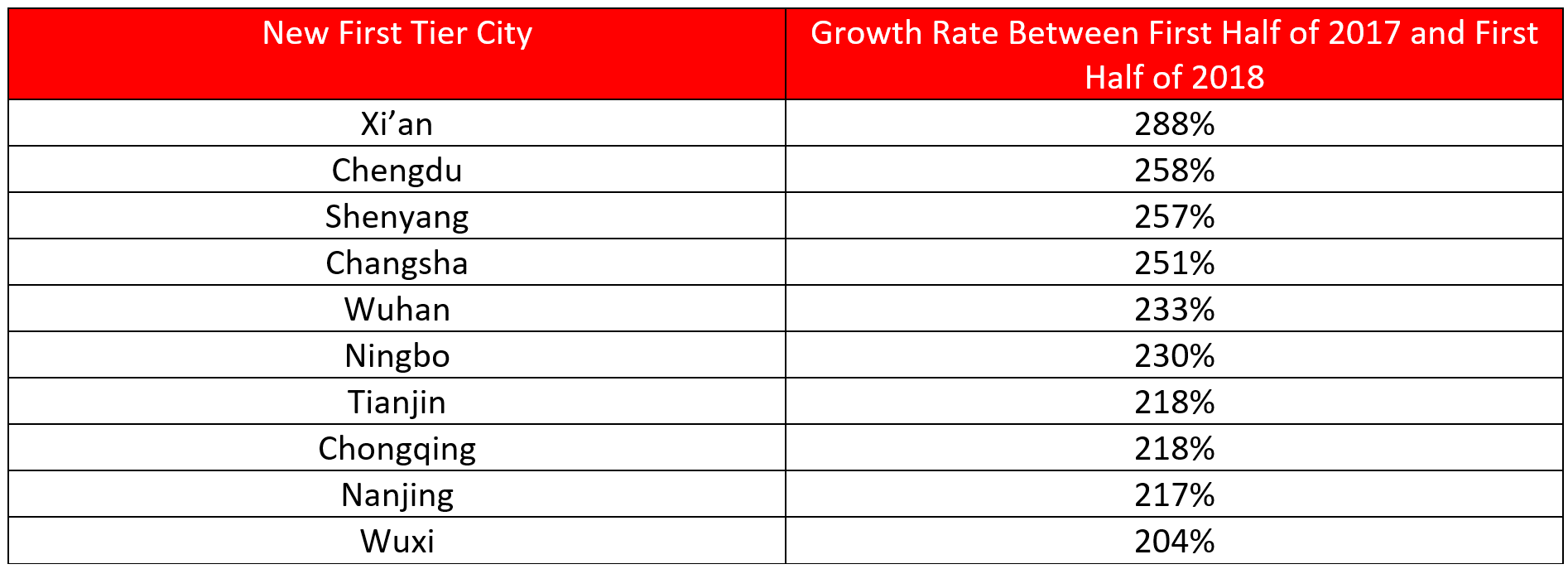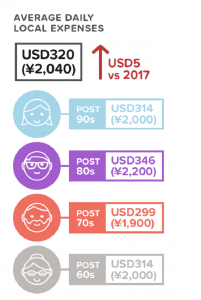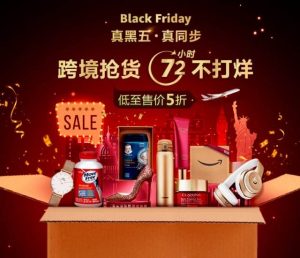Little Red Book or RED, a social e-commerce app, announced the launch of its “brand partner platform” in January. It helps brands connect directly to the site’s influencers if they would like to arrange for sponsored posts, endorsements or positive reviews. But it also introduced something else. Possibly one of the most important changes that the platform has ever made, it allows users to see which posts are paid content and which are not. This move shows that RED understands the importance of being transparent to its loyal followers. Especially seeing as how their reputation hinges on offering real opinions on brands.
Jacco
Shopping app Little Red Book opens platform for brand-KOL partnerships
A few months ago RED opened up the shopping cart features, and now it has taken a step towards encouraging partnerships between brands and KOLs. It opened a platform for verified brands and KOLs to search for and find each other. Companies and MCNs can now find influencers by searching content tags and view statistics such as a content creators’ fan count, number of likes, average hits over the past 30 days, and average number of comments per post. Could a next step be that we can match the demographics of the fan base as well? That is still missing in most KOL plans. But this new feature is a step in the right direction for brands, so all in all good news.
On WeChat, Daigou Get Creative to Skirt New E-Commerce Law
Daigou (cross-border personal shoppers) are affected by the changes in the Ecommerce law but they seem to be at a loss on where to start to comply with it. Instead they are trying to “stay low” through all kinds of tactics including hand drawn pictures of the products they sell and writing the description in different languages. How long do you think it will take for WeChat to crack down on them?
2019 China Tourism Trend Predictions
We’ve prepared a list of top tourism and travel trends for those wondering how to get a bigger slice of China’s outbound tourism market in 2019. This list is part of a Predictions Mini-Series in which we will also cover platforms and consumption trends for the coming year.

Before we dive in to this particular topic, let’s quickly recap the opportunities Chinese outbound tourism presents:
- China is the World’s Largest Outbound Tourism Market.
- As of 2015, Chinese tourists took 100 million outbound trips.
- On the back of greater access to online travel information, friendlier visa policies and rising incomes, this figure is expected to reach 160 million by 2020.
Chinese Outbound Tourists are the Highest Spending International Travelers.
- Chinese tourists spent a combined US$288 billion on international travel in 2018, which is nearly a quarter of global tourism spending.
- Chinese outbound tourists spend an average of US$2000 per trip (including flights and accommodation), the highest among international travelers.
Chinese Tourists Include Many Attractive Market Segments.
- Both the number of Chinese outbound tour-group travelers and independent travelers are on the rise, and there’s little difference in spending between group and independent travelers.
- Within these broad groups, there are a number of segments, such as shoppers, adventure-seekers, culture enthusiasts, escapists and landmark hunters.
With that in mind, let’s take you through our top tourism and travel trend predictions for 2019.
1. Younger Travelers Seek More Exotic Destinations
 Source: Mafengwo.com
Source: Mafengwo.com
Overall, destinations within four hours from China are most popular among Chinese outbound tourists.
However, we’re seeing younger travelers – especially those born between 1990 and 1999 – buck this trend. This group isn’t afraid to go long-haul for exotic destinations or niche experiences.
Fliggy, Alibaba’s travel platform, reported that Azerbaijan, Serbia, The Vatican, Georgia, Croatia, Portugal, Turkey, Ethiopia, Brazil and Peru saw the highest booking growth rates over 2018.
Analysis by Fliggy and CBNData ranks the following destinations as top of younger travelers’ wish lists:
- Panama
- Belarus
- Bahamas
- Ireland
- Algeria
- UK
- Iceland
- South Korea
- North Mariana Islands
- Mauritius
2. Outbound Tourists Still Concentrated in First Tier Cities, But Diversifying
Only a small percentage of China’s population has a passport and passport holders are heavily concentrated in China’s ‘First Tier’ cities – Beijing, Shanghai, Guangzhou and Shenzhen.
Fei Chang Zhun (飞常准), a data analytics company specializing in China’s travel industry, estimates that 74% of outbound tourists during China’s October National Holiday were from these four cities.
During the same period, around 17% of outbound tourists came from ‘New First Tier Cities’.
Outbound tourist numbers in these ‘New First Tier Cities’ are growing in triple digits. This fast growth means that 2019 will see an increasing number and proportion of Chinese outbound tourists come from ‘New First Tier Cities’.
Table 1: Growth Rates of Outbound Tourists from New First Tier Cities (H1 2017 to H1 2018)

With 14 ‘First Tier’ and ‘New First Tier’ cities occupying a substantial chunk of Chinese outbound tourists, targeting and tailoring marketing and promotional efforts is made much easier, because most of our target are not geographically disperse.
3. Unencumbered Middle Age and Senior Travelers Enjoy More
 Source: thedubrovniktimes.com
Source: thedubrovniktimes.com
China’s middle age and senior travelers make up 46% China’s outbound tourists, but are frequently forgotten as a result of the hype around millennial travelers.
Analysis from Hotels.com shows that Chinese outbound tourists born after 1960 and 1970 spend around USD 300 per day at their destination – the same as younger travelers.
Figure 1: Hotels.com Survey Analysis of Different Aged Travelers
 Source: Hotels.com
Source: Hotels.com
Unencumbered by mortgages or credit card debt, we expect China’s Post 60s and Post 70s outbound travelers to open the purse strings more and outspend their millennial counterparts in 2019.
That wraps up our 2019 tourism predictions! More exotic destinations for millennials, increasing diversity among outbound tourists and higher spending among middle aged and senior travelers.
Keep an eye on our blog and LinkedIn as we will also be publishing predictions on platforms and consumption trends in the coming weeks!
References:
[1] “China tourism statistical bulletin 2017,” Ministry of Culture and Tourism of the People’s Republic of China, 2017, en.cnta.gov.cn.
[2] “Workshop on Chinese Outbound Tourism Market”, United Nations World Tourism Organization Analysis, http://www2.unwto.org/event/unwto-workshop-chinese-outbound-tourism-market.
[3] “China tourism statistical bulletin 2017,” Ministry of Culture and Tourism of the People’s Republic of China, 2017, en.cnta.gov.cn; McKinsey Analysis.
[4] Oliver Wyman Chinese Traveler Survey.
[5] Zhongguo Chanye Xinxi, “2017 年中国人口年龄结构、居民出境游人数及居民赴港澳游人均消费支出统计分析”, http://www.chyxx.com/industry/201801/605713.html.
2019 China E-commerce Holiday Calendar
>> Hey!
>> The 2020 Calendar is out now.
>> Click here
China’s cross-border e-commerce & domestic e-commerce market continues to see high double-digit growth year on year. A recent publication from the Chinese government mentioned that between January and October 2018 retail imports of cross-border e-commerce reached 67.2 billion yuan in China, up 53.7% year-on-year. Additionally, data provided by the Ministry of Commerce showed that, by 2020, online retail sales will reach 9.6 trillion yuan, of which social e-commerce sales are expected to account for 31.3%. These numbers show the importance of digital marketing in China.

In this fast-growing consumer market, whether you are planning on entering the market in 2019 or you are already competing for consumers attention, being knowledgeable about the different kinds of e-commerce holidays is key to win!
Similar to previous years AgencyChina made the China E-commerce Holiday Calendar for 2019 to help your brand make a winning content plan.
January 1st: New Year
Admittedly the New Year celebration is not a typical day for e-commerce holiday, in China nor the rest of the world. However, it is a great moment for brands to do a kind of “warm-up” promotion leading up to the festivities. Especially targeting the younger generation as they enjoy celebrating New Year more than their parents do. And they often shop online to buy cosmetic and new clothes to wear to the parties. Research by AlphaWise, Morgan Stanley shows that cosmetics accounted for 12% of all cross-border ecommerce in China in 2016, and this has only increased since.
On this day, make sure you don’t run exactly the same promotional campaign as you did last year, as Chinese youngsters will notice and worse – get bored. This holds for most promotions of course!
February 4th: Chinese new year
For the Western New Year your brand could focus on the younger generation, but for Chinese Lunar New Year, the “parents’ generation” should not be forgotten. They are still represent a big share of online consumption. Since they are busy with work and taking care of their family, shopping for New Year’s groceries or gifts directly online is a trendy way nowadays. We recommend you use this occasion to bond with your customers by wishing them a Happy New Year and thanking them for their support throughout the year. Launch for example New Year promotions with red and pig as a theme as 2019 is the year of pig in China.
The big player Tmall always runs its campaign for Chinese Lunar New Year, which focuses on the promotion of groceries, known as “阿里年货节” which translates to “Ali New Year Festival”. It runs from the 21st till the 28th January.

February 14th: Valentine’s Day
Chinese couples grasp at every opportunity to express their love for each other. And even though Valentine’s Day on February 14th is originally a Western holiday, China has adopted it is one of their many days to celebrate love. It is a good opportunity for brands to promote products that represent love or presents that show how much the couples care for each other. Every year the interactive campaigns get more and more exciting allowing couples to interact with the brand and win offers and coupons or simply buy that one exclusive bag or giftset for their beloved. Don’t miss out on the heart shaped craziness!
March 8th: Women’s day
The real competition among ecommerce platform starts from International Women’s day. As a result of the increasing consumption power in China, different ecommerce platforms have created their own campaign in recent years to celebrate this day. In 2018 for example, VIP launched campaign called the “Food Beauty Day” (食尚女生节) which focused on the promotion of eatable food products for ladies; Tmall has it’s “Queen day” (天猫女王节) and JD.com launched “JD butterfly day” (京东蝴蝶节)which focuses on female cosmetics. For 2019 we still recommend going with a campaign or promotion for the ladies, but for the exact campaign content? Think out of box!

April 5th: Tomb sweeping day
To commemorate their ancestors Chinese people get 3 days’ holidays around the 5th of April. They visit and maintaining the graves and burn “sacrificial money” in honour of the dead. Hence, the festival has evolved into an occasion for people to go on a 1- or 2-days trip back home or for the younger generations to holiday destinations close by. For brands it is important to coordinate promotional campaigns accordingly. Promotions of short-distance travel packages, travel-related products and sportswear are likely to bring additional traffic. Especially when targeting China’s younger generation, hiking trips or sports related activities are popular.
May 12th: Mother’s Day
Mother’s Day is still a big thing in China as Chinese culture treasures the value of “filial piety”, or respect for one’s parents and grandparents. The opportunities for brands are endless. You can either focus on a mother’s needs, a child’s way to show gratitude, or offer a way for children who don’t live close to their mother to show how much they miss her. From a marketing perspective, promotion of cosmetic packages, health care packages or jewellery attract the widest audience around this day. It is best to start planning for the promotions two weeks in advance and don’t shy away from emotionally loaded campaigns, you never know, yours might go viral!
May 20th: “Wo Ai Ni” Day – Family Day
May 20th or 520 is known as the modern day Valentine’s Day in China because “Five Two Zero” in Chinese sound like “I love you”. Traditionally this day, like the regular Valentine’s Day, is based on the tradition of men showing their love for women through gifts. The best audience for marketers to target is still men born post ‘80s and ‘90s searching for the perfect gift for their partner. However, starting last year some ecommerce players have started changing this day of Love into a Family day. Instead of focusing on couples Tmall launched a campaign in 2018 targeting families, especially moms. During your preparations for this holiday, you could take a page from the Tmall playbook and go with promotional campaigns featuring baby and mother products which seemed to be well received last year.

June 1st: Children’s Day
Children’s Day has become a popular shopping festival over the years in China, with promotions beginning at the end of May and lasting through the first week of June. It is a great opportunity for brands to integrate online and offline strategies in order to sell toys and children’s apparel. For your marketing team it is important that they create campaigns that focus on the children, not just the parents, as it is common for parents to take their children to the store to choose their own gifts.

Image: GAP’s Bling Bling Clothes Campaign
June 6th: Taobao 66 Festival
The Taobao 66 Festival is Taobao’s mid-year promotional activity. It is a creative feast that cannot be missed for both sellers and consumers. Because even though it might now be a Taobao only festival where they use clever personalized recommendation and other diversified interactive ways to convince consumers to shop more, we all know that this is how “Double 11” started as well. And look at the market now, every online platform, every shopping mall and even the hospitals join in. So, it might be an opportunity for you and your team to be creative with your campaigns to attractive an audience that would otherwise go to Alibaba’s platforms to shop.
June 18th: Shopping Carnival
Every year we celebrate our own birthdays, and so does JD.com. Why do you ask? And the answer in China is, why not? During this day JD.com launches a series of large-scale promotional activities to thank it’s consumers for their support. And it is a huge success. JD.com’s 6.18 Shopping Carnival and Tmall’s Double 11 are the biggest ecommerce celebrations of the year in China. In 2018, JD.com reached sales of 159.2 billion on the day. From a marketing perspective, comprehensive campaigns that include free shipping, promotion codes and big discounts to promote your products are recommended. However, if you want to participate in the 6.18 madness – and we think you should – be sure to realise it takes more than just throwing up a promotion on different ecommerce platforms, a good campaign idea might just be the key to winning the ever-increasing competition.

August 7th: Qi Xi
Traditional Chinese Valentine’s Day aka “Qixi” (七夕) falls on Aug 7th this year and is another big day that brands should not missed out on. Gifting is engrained in Chinese culture and there are never enough occasions to buy each other gifts. So, whether you have the budget to make a special handbag for the Chinese market like Dior did last year with their “DiorAmour” handbag, or whether you keep it small with a personalized Valentine’s Day card in a Mini Program like New Look did last year. Everything goes, as Alibaba also indicates, the number of people searching for flowers, roses, and chocolates on online shopping websites increases dramatically around Qixi. So be sure to join in!

Image: The “DiorAmour” handbag. Courtesy photo
August 16th: VIP Middle Year Festival
Taobao is not the only platforms with a mid-year discount festival, VIP.com also hosts its very own special sale promotion activity right in the middle of the year. Whether you are a clothing brand, beauty & makeup brand or maternal and infant brand, everyone is offering big discount on that day. Promotion campaigns together with KOLs might help your brand stand out among competitors. Not sure what a KOL is? Click here to read more.
September 13th: Mid-Autumn Festival
In China, the Mid-Autumn Festival is a thousand-year-old celebration where families gather to partake in activities to celebrate the moon. On the day, family members and loved ones or friends like to buy mooncakes or moon related products to show their love and appreciation for one another. It’s a great time to promote small gift items. Make sure to stock up on them before the festival, and feel free to promote and share your campaigns well into the actual festival itself, as catchy and unique items tend to sell well throughout the festival.

October 1st: National Holiday
National Holiday, also known as Golden Week, is one of the longest public holidays in China. It sees the highest number of Chinese travelling internationally, thus is travel industry gold. Therefore, National Holiday is a great opportunity to run a comprehensive campaign including package promotion, promotion codes, and luck draw campaigns to interact with your customers around the theme of traveling. A bit similar to Tomb Sweeping Day but try to think bigger for this holiday, the largest share of the traveling related spending’s is done around this time.
November 11th: Double 11
The largest ecommerce festival of the year in China is on November 11, better known as Single’s Day or Double 11 (双十一). What started out as a day to celebrate Single people as a counter weight against multiple Valentine’s Days was taken by Alibaba and turned into a money maker. China’s voracious appetite for online shopping really shines on this day when billions of dollars are spent in mere minutes. According to Alibaba the Single’s Day record was broken yet again last year with US$30.8 billion in sales in 2018. And for years now all the other online platforms and offline stores around China are joining in to take their piece of the pie. Hence, China’s Singles’ Day is now about more than just sales, it has become a social event for consumers. We suggest brands, stores and platforms to start preparing a campaign at least a few months in advance. Additionally, in order to respond adequately to this festival, it is wise to plan your inventory in advance and make sure you invest in delivery, as slow delivery and lost packages are common issues occurring during 11.11. But the most important thing to remember is that the sky is really the limit with this day in China!

November 29th: Black Friday
Two of the world biggest ecommerce festivals take place in November. China’s ‘Double 11’ and Black Friday originating in the US. Originally used to describe the heavy and disruptive pedestrian and vehicle traffic that would occur on the day after Thanksgiving, Black Friday has long been setting its own records in sales. In 2018 the 23rd Black Friday reached US$6.3 billion in online sales which compared to China’s Double 11 might not seem like a lot but given the fact that Black Friday is still largely offline focused it is certainly not bad. The massive difference in online sales represents the contrast between US and China retail ecosystems as in China all sales happen almost exclusively online. But now Black Friday could be making its way into China and offering brands the opportunity to target consumers interested in foreign products with a campaign that is build around a Western promotion day. Do you have the next most original tag line for the Chinese market?

December 12th: Double 12
The Double 12 shopping festival is the last of the biggest ecommerce shopping festivals before the end of the year. Founded by leading ecommerce players Taobao and JD.com Double 12 is similar to Double 11, and offers a great opportunity to run a campaign including free shipping, promotion codes, and discounts to promote your brand in the final sprint for consumer attention.

December 25th: Christmas
Although Christmas is not a traditional Chinese holiday it has been getting more popular over the last few years, especially among the younger Chinese generations. Younger generations see the holiday more as a fashion related day for hip parties and fancy dinners with friends, rather than a family gathering. So, make sure you feature a variation of not too expensive gifts in your campaign, and even though it is the end of the year and your team has probably spent all its creative energy already try to make sure this last campaign is not boring. Making sure your campaign and products look trendy is an important factor to attract the younger generation to spend their last money of the year on that colourful scarf or that extra shiny lipstick.
Wow! Wrapping up you might already be impressed (or overwhelmed) by the amount of e-commerce shopping festivals in China, and there are even more! But the point is not to convince you to participate in all of these, it is merely to give you a well needed overview of the most important once.
We strongly recommend you choose the festival(s) that fit your brand’s message best. Not necessarily all brands have to go for the big festivals like Double 11. Finding the right channels and making a strong and coherent marketing campaign in advance is worth much more.
If you are not sure which channels you should choose or what ways you can use to convince your future Chinese consumers to buy your products, we at AgencyChina would love to consult and together we will make sure you grow your business in China!
Weibo plans to increase content-driven e-commerce investment
Weibo Corp, a leading social media platform, is investing 2 billion yuan ($290 million) to support content-driven e-commerce. Seeing as how the competition has shifted from expanding user scale to increasing the time users spend on app, Weibo is also attempting to better cater to the tech-savvy younger generation. To attract top content creators, and enrich content consumption Weibo will be launching an upgraded app, which further promotes video as a primary access point. It will include features premium video content with intellectual property rights-related products or video content by top KOLs.
Short video app Kuaishou doubles down on domestic e-commerce
Earlier this month, Douyin opened its shopping cart feature. It’s rival short video app Kuaishou following up, upgraded its e-commerce services, giving preference to domestically produced goods and partnering with Chinese e-commerce giants services such Alibaba-owned Taobao and Tmall, as well as mobile e-commerce platform Youzan in the hope of commercializing its 150 million daily active users. Products will be displayed with more prominence and order tracking and management features are integrated within the app.
Baidu to invest RMB 1 billion in mini-program development
The mini-program battle is still on. Initially, mini-programs was created by WeChat, with a whopping 580,000 mini-programs being launched in 2017. Recognizing the attractive market, Chinese search giant Baidu recently launched an RMB 1 billion (around $140 million) mini-program fund targeting startups and developers to accelerate the construction of its mini-program ecosystem. A number of apps already plan to collaborate with Baidu to bring the mini-program feature to their users, such as Bilibili, iQiyi, Kuaishou, Moji Weather and Chinese Calendar. This could be a great opportunity for startups and developers to acquire users in a new way. It is exciting to see the results!
Slow growth aside, Singles’ Day displayed its value to China retail
The growth rate of Singles’ Day has been slowing since 2015. This year, Singles’ Day GMV grew 23.7%, compared to last years’ 43.5% growth. But growth figures aside, Singles’ Day has changed China’s retail landscape as it continually introduces new brands and products from different countries. For some overseas retailers, Singles’ Day was a valuable opportunity to gain brand recognition in China. The festival does not only let Chinese consumers enjoy a wider selection of products but also allows brands to consolidate their foothold in the country. It also forced retailers to up their game, creating an upgraded retail landscape with unconventional shopping experiences. From connecting China with other countries, boosting the online-offline retail integration, to championing the adoption of advanced technology in the supply chain and physical stores, Singles’ Day has demonstrated its value to China’s retail ecosystem.
Baidu-backed Haokan Video blocked from WeChat Moments
The competition between Chinese tech giants has reached yet a new feverish pitch. Tencent has blocked Baidu-backed video platform Haokan from sharing content to WeChat’s popular feed. Haokan content shared on WeChat Moments was only visible to the sharer, not to his or her contacts. Tencent is trying to keep up with the video trend, so far, they launched more than 10 video apps targeting different user groups. At the same time, it is defending its position in the market by limiting access to rival platforms on WeChat seeing as how that is still considered the dominant entry point for online services in China. It is probably only a matter of time before another APP gets blocked from sharing or posting on WeChat.










